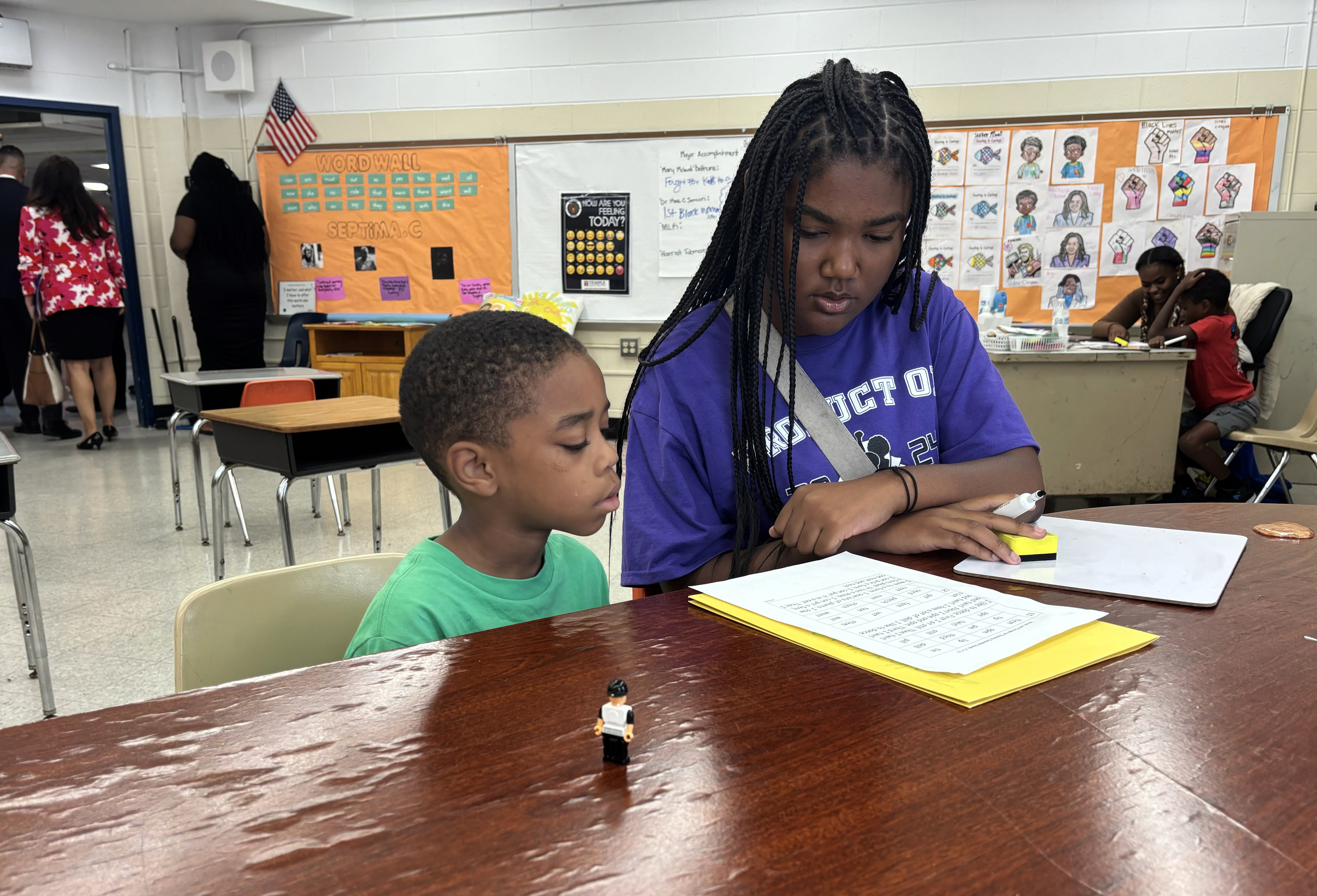Report on Declining Literacy Rates in the United States and Implications for Sustainable Development Goals
Introduction: A Challenge to Achieving SDG 4 (Quality Education)
Recent analysis indicates a significant decline in reading proficiency among American students, a trend that poses a direct challenge to the achievement of Sustainable Development Goal 4 (Quality Education). This report examines the evidence of a growing literacy crisis, from primary school to higher education, and assesses its impact on the United Nations’ 2030 Agenda for Sustainable Development, particularly targets related to education, inequality, and economic growth.
Analysis of Literacy Data in the Context of SDG Targets
Primary and Secondary Education: Failing to Meet SDG Target 4.1
Data from the National Assessment of Educational Progress (NAEP), also known as the Nation’s Report Card, reveals a concerning trend that directly undermines SDG Target 4.1, which aims to ensure all children complete quality primary and secondary education leading to effective learning outcomes. The decline in reading proficiency began prior to the COVID-19 pandemic and has since worsened.
- NAEP reading scores have been in decline since peaking between 2013 and 2015.
- Currently, 40% of fourth-grade students and 33% of eighth-grade students are performing below the basic proficiency level in reading.
- This represents a significant regression from 2013, when 33% of fourth-graders and 23% of eighth-graders were below the basic level.
This data indicates a systemic failure to provide foundational literacy skills, a prerequisite for achieving quality education for all.
Widening Gaps and Contradiction with SDG 10 (Reduced Inequalities)
The decline in literacy is not uniform across all student populations. The most significant drops in performance are concentrated among the bottom third of scorers. This trend exacerbates educational disparities and works in direct opposition to SDG 10, which calls for reducing inequalities within and among countries.
- While high-achieving students’ scores have remained relatively stable, lower-achieving students are falling further behind.
- This growing educational gap threatens social mobility and perpetuates cycles of disadvantage, impacting progress towards SDG 1 (No Poverty) and SDG 8 (Decent Work and Economic Growth).
Systemic Factors Contributing to the Literacy Decline
Several interconnected factors appear to be contributing to this crisis, highlighting systemic challenges in aligning educational practices with sustainable development objectives.
- Pedagogical Approaches: Widespread debate over teaching methodologies, particularly the “science of reading” versus other approaches, suggests a lack of consensus on effective, evidence-based instruction. The success of the podcast Sold a Story has prompted legislative changes in numerous states, indicating a systemic effort to realign teaching practices to improve foundational skills, a core component of SDG 4.
- The Digital Environment: The proliferation of digital technology and increased screen time among children is a potential contributing factor. While digital literacy is an important skill, its rise may be occurring at the expense of deep reading and comprehension, skills essential for achieving SDG Target 4.4 (relevant skills for employment).
- Educational Policy: Some analysts note that the decline in NAEP scores began after the 2015 conclusion of the No Child Left Behind Act, suggesting that national education policy plays a critical role in driving accountability and outcomes related to educational goals.
Higher Education and Long-Term Impacts on SDG 8 (Decent Work and Economic Growth)
Challenges in Tertiary Education
While hard data is limited, anecdotal reports from college professors suggest that the literacy problem persists into higher education. Educators report that students are increasingly unprepared for the reading and analytical demands of college-level coursework. A small-scale 2015 study found that a majority of undergraduate English majors struggled to comprehend a complex text like Charles Dickens’ Bleak House. This indicates a failure in the K-12 system to prepare students for lifelong learning, a central tenet of SDG 4.
Implications for a Skilled Workforce
A decline in reading comprehension and critical analysis skills poses a long-term threat to achieving SDG 8 (Decent Work and Economic Growth). A modern, sustainable economy requires a workforce capable of complex problem-solving, innovation, and critical thinking—all of which are built upon a foundation of strong literacy. The current trends suggest a future workforce may lack the essential skills needed for decent jobs and sustained economic progress.
Conclusion: An Urgent Call to Action for the 2030 Agenda
The evidence strongly suggests that the United States is experiencing a literacy crisis that compromises its ability to meet key Sustainable Development Goals. The decline in reading proficiency, especially among the most vulnerable students, undermines progress on SDG 4 (Quality Education), SDG 10 (Reduced Inequalities), and SDG 8 (Decent Work and Economic Growth). The problem is not a generational complaint but a data-supported reality that requires an urgent and strategic response.
- Addressing this crisis requires a renewed national commitment to ensuring every child achieves foundational literacy, in line with SDG Target 4.6.
- Educational policies must prioritize equity to close the achievement gap and advance SDG 10.
- Further research and strategic curriculum development are needed to balance the demands of digital literacy with the critical importance of deep, text-based comprehension.
- The rise of generative AI presents a new, complex challenge, making it more critical than ever to ensure students possess the foundational skills to navigate an increasingly text-based and information-rich world.
Which SDGs are addressed or connected to the issues highlighted in the article?
SDG 4: Quality Education
- The entire article revolves around the quality of education, specifically focusing on a perceived “literacy crisis” among American children and young adults. It questions whether the education system is providing students with fundamental reading and comprehension skills. The text explicitly discusses declining reading scores, the preparedness of students for higher education, and the effectiveness of teaching methodologies, all of which are central to the goal of ensuring inclusive and equitable quality education.
What specific targets under those SDGs can be identified based on the article’s content?
-
Target 4.1: By 2030, ensure that all girls and boys complete free, equitable and quality primary and secondary education leading to relevant and effective learning outcomes.
- The article directly addresses the effectiveness of learning outcomes in primary and middle school. It cites data from the National Assessment of Educational Progress (NAEP) showing a decline in reading proficiency. For example, it states, “for the last decade, NAEP reading scores have been in decline,” and mentions that “40 percent of students in grade four and 33 percent in grade eight” are not meeting a basic level of proficiency. This highlights a failure to achieve “effective learning outcomes” in basic literacy.
-
Target 4.4: By 2030, substantially increase the number of youth and adults who have relevant skills… for employment, decent jobs and entrepreneurship.
- The article discusses the lack of sophisticated reading skills among college students, which are crucial for higher education and future employment. It quotes a professor saying, “even highly motivated honors students struggle to grasp the basic argument of a 20-page article.” This points to a gap in the “relevant skills” that young adults are expected to possess after completing secondary education. The article notes the problem persists into higher education, affecting students’ ability to handle complex texts required for professional fields.
-
Target 4.6: By 2030, ensure that all youth and a substantial proportion of adults, both men and women, achieve literacy and numeracy.
- This target is at the core of the article’s main theme. The central question posed is, “Can the kids read, though?” The discussion is framed as a “literacy crisis.” The article provides statistics on the percentage of students who are “really struggling with the fundamentals of literacy” and explores the anecdotal evidence from college professors about students who “can no longer even read full books.” This directly relates to the goal of achieving widespread literacy among the youth population.
Are there any indicators mentioned or implied in the article that can be used to measure progress towards the identified targets?
-
Proficiency levels in reading at primary and lower secondary education (Indicator 4.1.1).
- The article explicitly and repeatedly refers to the National Assessment of Educational Progress (NAEP), or “the Nation’s Report Card,” as the source for data on literacy. It provides specific statistics that function as indicators: “That number is now 40 percent of students in grade four and 33 percent in grade eight” who are below a basic proficiency level. It also tracks the trend of these scores, noting, “They’ve been falling since then [2013 or 2015].” This data directly measures the proportion of children achieving a minimum proficiency level in reading at the primary (grade 4) and lower secondary (grade 8) levels.
-
Proficiency levels in functional literacy among youth/adults (Indicator 4.6.1).
- The article implies this indicator through its discussion of college students’ reading abilities. While not a standardized national metric, the study by Professor Susan Carlson provides a specific measurement: “Fifty-eight percent of them [undergraduate English and English education majors] could not get through a few paragraphs without being completely lost.” This serves as an indicator of the functional literacy and comprehension skills of a specific cohort of young adults in higher education. The anecdotal reports from professors about students’ inability to “read effectively” also point to this measure of proficiency.
SDGs, Targets, and Indicators Analysis
| SDGs | Targets | Indicators |
|---|---|---|
| SDG 4: Quality Education | Target 4.1: Ensure quality primary and secondary education leading to effective learning outcomes. | National Assessment of Educational Progress (NAEP) scores: The article cites that 40% of fourth-graders and 33% of eighth-graders are reading below a basic proficiency level, indicating a decline in effective learning outcomes. |
| SDG 4: Quality Education | Target 4.4: Increase the number of youth and adults with relevant skills for employment. | College-level reading comprehension: The article notes that “even highly motivated honors students struggle to grasp the basic argument of a 20-page article,” suggesting a lack of relevant analytical and reading skills needed for higher education and professional life. |
| SDG 4: Quality Education | Target 4.6: Ensure all youth and a substantial proportion of adults achieve literacy. | Literacy proficiency rates among young adults: A study mentioned in the article found that “Fifty-eight percent of [undergraduate English majors] could not get through a few paragraphs [of Charles Dickens] without being completely lost,” serving as a direct measure of literacy proficiency in a youth cohort. |
Source: vox.com







